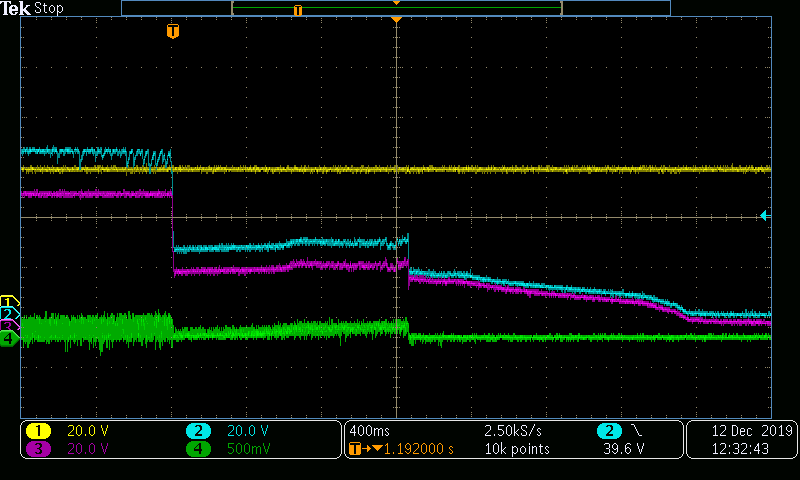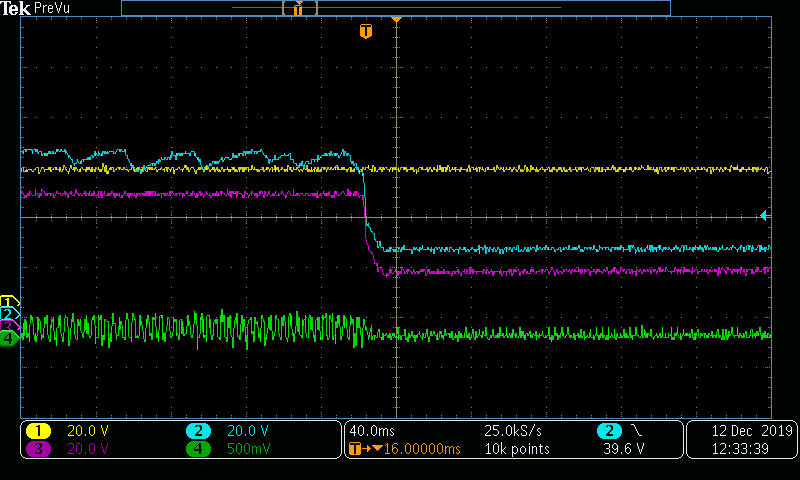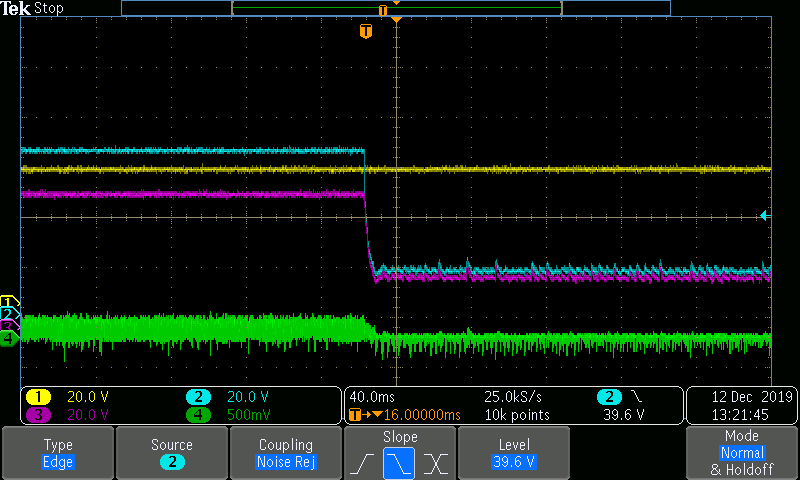I am testing a FAN controller board in a thermal chamber and have encountered a weird failure. FAN controller has 4 fans, 3A, 54V each. Each fan connected to an LM5066. FAN speed could go up to 16500 RPM.
At 0C, when I ramp up from 4000RPM to 16500RPM, sometimes FAN1 and FAN2 shut down by LM5066. Note that the failure is not during start-up, but when FANs are running at lower speed (4000RPM) and ramped up to 16500RPM.
LM5066 register E1 is 0AC8 for the two failed FANs and is 0888 for the functional FANs.
Comparing the registers, notice that:
Bit 3 (IIN_OC) is set in all 4 LM5066 devices
Bit 6 (DEVICE_OFF) is set in 2 failed LM5066 devices (makes sense)
Bit 9 (TIMER_LATCHED_OFF) is set in 2 failed LM5066 devices.
I am not sure why Fault timer is expired, doesn’t it only run during the start-up?
I have also exchanged failed fans 1,2 and 3,4 and the failure followed the LM5066 location not the FANs.





